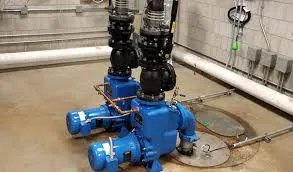English
- Afrikaans
- Albanian
- Amharic
- Arabic
- Armenian
- Azerbaijani
- Basque
- Belarusian
- Bengali
- Bosnian
- Bulgarian
- Catalan
- Cebuano
- Corsican
- Croatian
- Czech
- Danish
- Dutch
- English
- Esperanto
- Estonian
- Finnish
- French
- Frisian
- Galician
- Georgian
- German
- Greek
- Gujarati
- Haitian Creole
- hausa
- hawaiian
- Hebrew
- Hindi
- Miao
- Hungarian
- Icelandic
- igbo
- Indonesian
- irish
- Italian
- Japanese
- Javanese
- Kannada
- kazakh
- Khmer
- Rwandese
- Korean
- Kurdish
- Kyrgyz
- Lao
- Latin
- Latvian
- Lithuanian
- Luxembourgish
- Macedonian
- Malgashi
- Malay
- Malayalam
- Maltese
- Maori
- Marathi
- Mongolian
- Myanmar
- Nepali
- Norwegian
- Norwegian
- Occitan
- Pashto
- Persian
- Polish
- Portuguese
- Punjabi
- Romanian
- Russian
- Samoan
- Scottish Gaelic
- Serbian
- Sesotho
- Shona
- Sindhi
- Sinhala
- Slovak
- Slovenian
- Somali
- Spanish
- Sundanese
- Swahili
- Swedish
- Tagalog
- Tajik
- Tamil
- Tatar
- Telugu
- Thai
- Turkish
- Turkmen
- Ukrainian
- Urdu
- Uighur
- Uzbek
- Vietnamese
- Welsh
- Bantu
- Yiddish
- Yoruba
- Zulu
Telephone: +86 13120555503
Email: frank@cypump.com
Sep . 29, 2024 02:58 Back to list
Efficient Horizontal Centrifugal Pumps for Handling Slurry Applications in Various Industries
Overview of Horizontal Centrifugal Slurry Pumps
Horizontal centrifugal slurry pumps are essential components in various industries where the transfer of mixtures containing solid particles is required. These pumps are designed to handle abrasive and viscous materials effectively, making them a go-to choice for mining, mineral processing, wastewater treatment, and other industrial applications.
Design and Functionality
The core principle of a horizontal centrifugal slurry pump revolves around converting rotational energy from an impeller into kinetic energy of the slurry. The impeller spins within a casing, generating a centrifugal force that moves the slurry from the inlet to the outlet. These pumps typically feature a horizontal orientation, which allows for easier installation and maintenance. The pump consists of several critical components, including the pump casing, impeller, shaft, bearings, and a mechanical seal.
Impeller Design
The design of the impeller plays a crucial role in the performance of horizontal centrifugal slurry pumps. Impellers are often made from high-wear materials, such as high-chrome alloys or elastomers, to withstand the abrasive nature of the slurry. They come in various designs—open, semi-open, or closed—each suited to different applications and types of slurries. An open impeller may be used for slurry with larger particles, while a closed impeller is more efficient for finer materials.
Pump Casing and Wear Parts
The pump casing encases the impeller, creating a pathway for the slurry to flow through. It is designed to accommodate high pressures and abrasiveness, with materials selected based on the slurry’s characteristics. Additionally, various wear parts, such as liners and throat bushings, can be included in the design to prolong the lifespan of the pump. These components are often replaceable, allowing for ease of maintenance and reduced downtime.
Performance Characteristics
One of the defining factors of horizontal centrifugal slurry pumps is their ability to handle high solid concentrations. They are designed to provide a consistent flow rate while managing the viscosity and density variations characteristic of slurry mixtures. Several performance parameters, including flow rate, head (the height to which the pump can lift the slurry), and efficiency, are critical when selecting the appropriate pump for a given application.
horizontal centrifugal slurry pump

Efficiency Considerations
Efficiency is a key concern in the operation of horizontal centrifugal slurry pumps. While these pumps are designed to handle challenging materials, they can encounter issues such as cavitation or excessive wear if not properly selected or maintained. Choosing the right impeller size, casing material, and operating conditions directly impacts the pump’s efficiency and, consequently, its operating costs.
Applications
Horizontal centrifugal slurry pumps are widely used across various sectors
1. Mining and Mineral Processing These pumps transport tailings and slurry resulting from mineral extraction processes. Their ability to handle highly abrasive materials makes them indispensable in this industry.
2. Wastewater Treatment In wastewater treatment facilities, slurry pumps are utilized to move sludge and other byproducts confidently. They ensure that solid waste is effectively managed and treated.
3. Construction In construction projects, such as tunneling or site excavation, slurry pumps are employed to manage slurry materials, ensuring smooth operations and preventing flooding.
4. Pulp and Paper Industry These pumps manage the movement of pulp slurry in the manufacturing process, highlighting their versatility across different material types.
Conclusion
Horizontal centrifugal slurry pumps are vital in managing and transporting slurries across diverse industries. Their robust design, efficiency, and adaptability to various applications make them a preferred choice for handling abrasive materials. With continuous advancements in technology and materials, these pumps are poised to evolve, ensuring improved performance and reliability in demanding operational environments. Understanding their mechanisms, capabilities, and applications is essential for any professional involved in industries that require effective slurry management. Thus, optimizing the use of horizontal centrifugal slurry pumps can lead to enhanced productivity, cost-effectiveness, and sustainability in industrial processes.
-
Horizontal Split Case Pump with GPT-4 Turbo | High Efficiency
NewsAug.01,2025
-
ISG Series Pipeline Pump - Chi Yuan Pumps | High Efficiency, Durable Design
NewsAug.01,2025
-
Advanced Flue Gas Desulfurization Pump with GPT-4 Turbo | Durable & Efficient
NewsJul.31,2025
-
ISG Series Vertical Pipeline Pump - Chi Yuan Pumps | Advanced Hydraulic Design&Durable Construction
NewsJul.31,2025
-
ISG Series Vertical Pipeline Pump - Chi Yuan Pumps | Energy Efficient & Low Noise
NewsJul.31,2025
-
pipeline pump - Chi Yuan Pumps Co., LTD.|High Efficiency&Low Noise
NewsJul.31,2025










